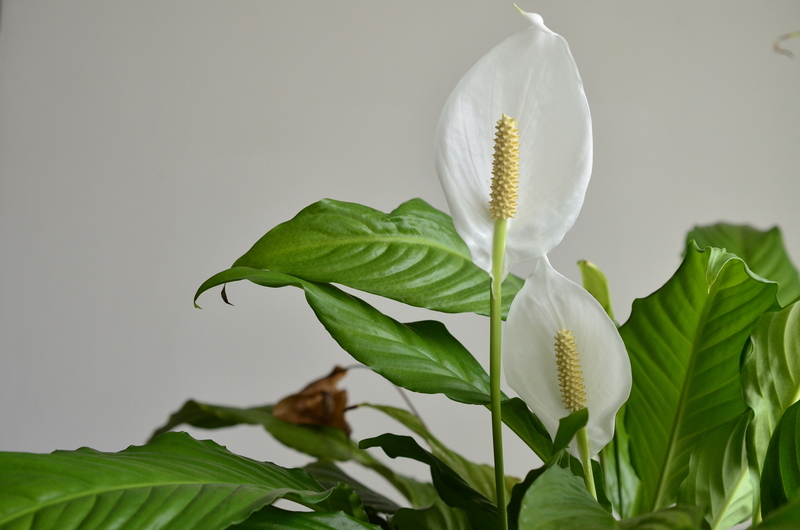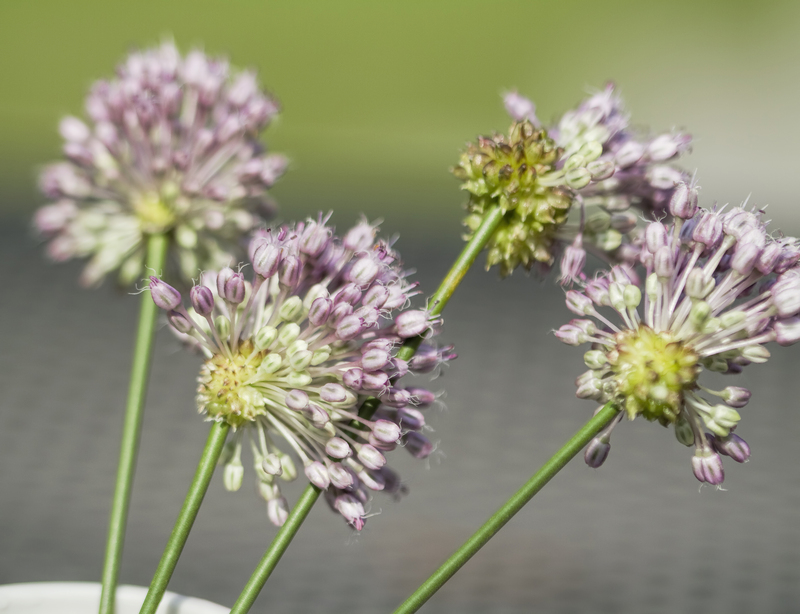Creative Vertical Gardening for Urban Areas
Posted on 15/09/2025
Creative Vertical Gardening for Urban Areas: Making the Most of Small Spaces
Urban dwellers often face the challenge of limited space, especially when it comes to growing plants. Vertical gardening in urban areas turns this constraint into an opportunity, transforming bare walls, balconies, and tight courtyards into lush, productive oases. This article explores the ins and outs of creative vertical gardening, offering practical tips, plant ideas, and design inspirations to help city residents bring nature closer, even in the most compact settings.

What Is Vertical Gardening?
Vertical gardening is an innovative technique that involves growing plants up and down rather than outwards. This approach maximizes the use of vertical space, leveraging walls, trellises, shelves, or hanging structures. For urban environments, where traditional gardens are rare luxuries, vertical gardening opens up numerous possibilities for cultivating everything from herbs and flowers to fruits and vegetables.
The Rise of Urban Vertical Gardens
With global urbanization accelerating, people are seeking ways to integrate more greenery into their daily lives. Urban vertical gardens are not just pleasing to the eye--they improve air quality, moderate building temperatures, mitigate noise pollution, and enhance mental health. From charming DIY projects to large commercial installations, vertical gardening is reshaping how we think about space in cities.
Benefits of Vertical Gardening in Urban Environments
- Space Efficiency: Perfect for balconies, courtyards, and walls where horizontal space is at a premium.
- Improved Air Quality: Plants filter toxins and produce oxygen, making urban air healthier.
- Insulation and Energy Savings: Green walls can reduce heat absorption, lowering cooling costs in summer and retaining warmth during winter.
- Enhanced Biodiversity: Attracts pollinators, birds, and beneficial insects back into city centers.
- Aesthetic Appeal: Adds beauty, color, and vibrancy to otherwise drab concrete surfaces.
- Mental Wellbeing: Connecting with nature--even on a small scale--reduces stress and enhances mood.
Environmental Impact of Vertical Gardens
Vertical gardens contribute significantly to the urban ecosystem. They help manage rainwater runoff, absorb pollutants, decrease the heat island effect, and provide habitats for urban wildlife. With climate change posing ongoing challenges, innovative gardening in vertical spaces is a sustainable solution for greener cities.
Getting Started with Urban Vertical Gardening
Launching a creative vertical garden in an urban area is easier than you might think. Whether you're a seasoned gardener or a beginner, follow these steps to get your green wall growing:
1. Assess Your Space
- Identify available vertical surfaces--walls, fences, balconies, or window grilles.
- Consider sunlight exposure, wind patterns, and accessibility for watering and maintenance.
2. Choose Your Structure
- Living Walls: Professionally designed systems using felt pockets, plastic cells, or modular panels.
- DIY Trellises: Made from wood, bamboo, or metal for climbing plants.
- Pallet Planters: Upcycled wooden pallets for budget-friendly vertical gardening.
- Wall-Mounted Planters: Pots, bags, or PVC pipes affixed to walls or railings.
- Hanging Gardens: Using baskets, shoe organizers, or tiered racks.
3. Select Suitable Plants
- Opt for species that match your light and climate conditions. Urban environments can be harsh, so choose resilient varieties.
- Mix aesthetics and function--herbs, edible greens, and flowering plants are excellent choices.
4. Ensure Proper Irrigation
- Vertical gardens dry out faster; set up drip irrigation or self-watering systems if possible.
- Hand watering works for small installations, but monitor soil moisture closely.
Innovative Ideas for Vertical Gardens in Urban Areas
Let your imagination guide you! Creative vertical gardening encourages experimentation and personal flair. Here are some fresh approaches for city settings:
1. Upcycled Container Gardens
- Repurpose old shoe organizers by filling pockets with soil and planting small herbs or succulents.
- Use gutter pipes attached to fences for a cascading salad bar of lettuces and herbs.
- Mount mason jars on reclaimed wood for a rustic, indoor kitchen herb garden.
2. Edible Green Walls
- Grow leafy greens, strawberries, or compact tomatoes in wall-mounted planters.
- Train climbing beans, peas, and cucumbers along trellises for vertical food production.
- Install hydroponic vertical gardens for year-round fresh vegetables, even indoors.
3. Artistic Plant Displays
- Design geometric patterns or living mosaics using modular wall panels and colorful foliage.
- Intertwine flowering vines, such as morning glories or honeysuckle, over decorative arbors.
- Combine plants with outdoor art or lighting for a multi-sensory experience.
4. Green Privacy Screens
- Install bamboo screens or dense climbers like ivy for living fences that shield balconies from view.
- Use tall, narrow planters filled with ornamental grasses or bamboos as stylish room dividers.
5. Indoor Vertical Gardens
- Build small-scale living walls for apartments using felt pockets or stackable pots.
- Hang air plants (Tillandsia) for a low-maintenance, soil-free option indoors.
- Try vertical hydroponics for herbs, microgreens, or leafy greens right in your kitchen.
Plant Suggestions for Vertical Gardening in the City
Selecting the right plants is vital for your vertical garden's success. Below are robust options for different conditions commonly found in urban areas:
Sun-Loving Plants
- Herbs: Basil, oregano, rosemary, thyme, sage
- Vegetables: Cherry tomatoes, peppers, dwarf beans
- Flowers: Petunias, nasturtiums, marigolds
- Succulents: Sedum, echeveria, crassula
Shade-Tolerant Plants
- Herbs: Mint, chives, parsley, cilantro
- Vegetables: Lettuce, spinach, arugula
- Foliage: Ferns, pothos, philodendron
- Flowers: Impatiens, begonias, fuchsia
Vining and Climbing Plants
- English ivy, clematis, jasmine, morning glory
- Passionfruit, kiwi (small varieties), grapevines
- Beans, peas, cucumbers
Design Considerations for Urban Vertical Gardens
Creating an effective and eye-catching vertical garden requires attention to several design and maintenance factors:
- Weight: Ensure walls or railings can support the combined mass of planters, soil, and water.
- Drainage: Excess water should escape without damaging surfaces or causing mold.
- Accessibility: Keep plants within easy reach for watering, pruning, and harvesting.
- Rotation: Swap out annuals or experiment with new plant combinations for season-long interest.
- Multipurpose Use: Combine edible and ornamental plants to maximize beauty and utility.
Lighting for Indoor Vertical Gardens
Urban spaces often lack strong sunlight. If you're setting up an indoor vertical garden, invest in full-spectrum LED grow lights to supplement natural light, ensuring your plants remain healthy and vigorous.
Maintenance Tips for Thriving Urban Vertical Gardens
A thriving urban vertical garden doesn't require a green thumb--just consistency and care. Here are essential maintenance practices:
- Regular Watering: Check moisture levels often, especially in summer or heated indoor spaces.
- Fertilization: Feed your plants with diluted liquid fertilizer every few weeks to compensate for limited soil volume.
- Pruning: Remove dead leaves, trim vines, and pinch tips to encourage bushiness.
- Pest Checks: Inspect plants regularly for aphids, mites, or fungal diseases.
- Replanting: Rotate plants seasonally and refresh soil as needed to keep your display vibrant.
Case Studies: Real-World Vertical Gardens in Urban Settings
Commercial Living Walls
Many office buildings, hotels, and public spaces are incorporating large-scale living walls. These green installations reduce ambient temperatures, offer acoustic buffering, and project a progressive, eco-conscious image. Cities like Singapore, London, and New York are leading the trend.
Community Vertical Gardens
In some neighborhoods, residents and organizations collaborate to create shared creative vertical gardening projects on fences or community center walls. These efforts beautify communal landscapes and foster social connection.
Home Hustles: Apartment Balconies
Urbanites are increasingly turning their balconies into productive green spaces. Vertical planters can yield fresh salad greens, provide privacy screens, and add value to high-rise living.
Vertical Gardening for Renters and Small Spaces
Good news for renters: vertical gardening can be totally non-permanent. Use freestanding racks, leaning ladders, or tension pole systems that require no drilling or permanent alterations. Hanging baskets and shoe organizer planters can be moved or taken with you, ensuring your green thumb is always portable.

Future Trends in Urban Vertical Gardening
As climate resilience and food security become pressing issues, expect to see even more creative uses for vertical spaces in cities. Innovations on the horizon include:
- Automated hydroponic towers--self-watering, app-controlled systems for year-round fresh produce.
- Modular plant walls--easy-to-install panels for home, office, or public spaces.
- Edible facades--residential and commercial buildings clad with productive plants.
- Integration with renewable energy--solar panels supporting vertical green infrastructure for energy and food production in one.
Conclusion: Greening Our Cities, One Wall at a Time
Creative vertical gardening for urban areas is a movement that empowers city dwellers to reclaim nature, improve their quality of life, and foster sustainability. Whether you're revamping a balcony, beautifying an office space, or engaging with your community, the vertical approach is both practical and inspiring. With imagination, planning, and a touch of care, anyone--no matter their space restrictions--can turn grey walls into thriving vertical gardens. Get started today and help make your city greener, healthier, and more beautiful!

